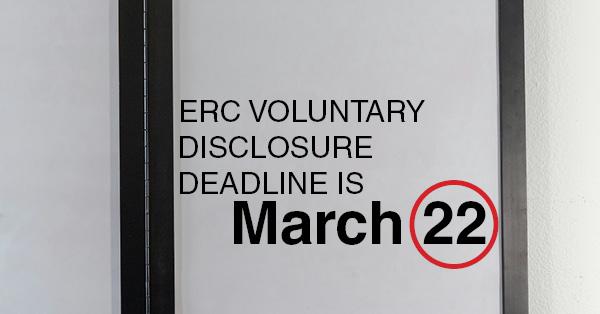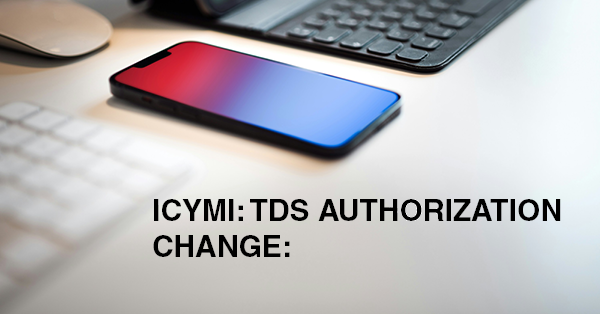ERC VOLUNTARY DISCLOSURE DEADLINE IS MARCH 22:

Last December, the Internal Revenue Service announced that businesses that received improper Employee Retention Credit (ERC) amounts could let the agency know about the error.
In these cases, many of which were created when companies got bad tax advice from aggressive ERC promoters, the companies would have to repay only 80 percent of the erroneously received credit amount.
For those who did get ERC money, but now have doubts about its legitimacy, the IRS established the ERC-VDP. This allows business owners who discovered they got improperly claimed ERC money to alert the IRS, and pay back most of the credit.
Determining disclosure eligibility: If your client received the ERC, but discover that they were not entitled to it, the employer can apply for the ERC-VDP if the following four conditions also are true.
- The employer is not under criminal investigation and has not been notified that they are under criminal investigation.
- The employer is not under an IRS employment tax examination for the tax period for which they're applying to the Voluntary Disclosure Program.
- The employer has not received an IRS notice and demand for repayment of part or all of the ERC.
- The IRS has not received information from a third party that the taxpayer is not in compliance or has not acquired information directly related to the noncompliance from an enforcement action.
Then file IRS Form 15434, Application for Employee Retention Credit Voluntary Disclosure Program. The Form 15434 must be submitted using the IRS Document Upload Tool.
If the IRS approves the program application, it will mail the employer a closing agreement. The employer must then repay 80 percent of the ERC they received, either online or by phone, using the Electronic Federal Tax Payment System (EFTPS).
Seven suspicious signs an ERC claim could be incorrect:
- Too many quarters being claimed. Some promoters urged employers to claim the ERC for all quarters that the credit was available. Qualifying for all quarters is uncommon. Employers should carefully review their eligibility for each quarter.
- Government orders that don’t qualify. Some promoters told employers they can claim the ERC if any government order was in place in their area, even if their operations weren’t affected or if they chose to suspend their business operations voluntarily. This is false. Some promoters also suggested that an employer qualifies based on communications from the Occupational Safety and Health Administration. This is generally not true. Employers should review the frequently asked questions about ERC – Qualifying Government Orders for more information and helpful examples for these topics.
- Too many employees and wrong calculations. Employers should be cautious about claiming the ERC for all wages paid to every employee on their payroll. Employers need to meet certain rules for wages to be considered qualified wages, depending on the tax period. Employers should review all calculations to avoid overclaiming the credit. They should not use the same credit amount across multiple tax periods for each employee. For details on credit amounts, see the ERC 2020 vs 2021 Comparison Chart.
- Business citing supply chain issues. A supply chain disruption by itself doesn’t qualify an employer for ERC. An employer needs to ensure that their supplier’s government order meets the requirements. Employers should carefully review the rules on supply chain issues and examples in the 2023 legal memo on supply chain disruptions.
- Business claiming ERC for too much of a tax period. It's possible, but uncommon, for an employer to qualify for ERC for the entire calendar quarter if their business operations were fully or partially suspended due to a government order during a portion of a calendar quarter. A business in this situation can claim ERC only for wages paid during the suspension period, not the whole quarter. Businesses should check their claim for overstated qualifying wages and should keep payroll records that support their claim.
- Business didn’t pay wages or didn’t exist during eligibility period. Employers can only claim ERC for tax periods when they paid wages to employees. Records available to the IRS show some businesses that claimed ERC didn’t have any employees or they claimed ERC for tax periods before the business existed.
- Promoter says there’s nothing to lose. Businesses should be on high alert with any ERC promoter who urged them to claim ERC because they “have nothing to lose.” Businesses that incorrectly claim the ERC risk repayment, penalties, interest, audit and other expenses.




